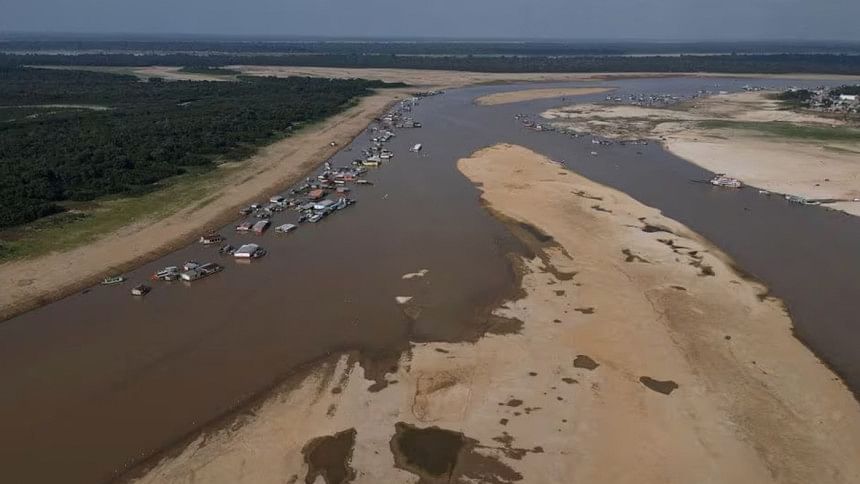Explainer: Why is the limit of global warming 1.5 degrees Celsius

The climate crisis is upon us. Many of the damages of human activity caused climate change to become irreversible already, but now the focus is on mitigation and adaptation. With a view to limiting the emission of greenhouse gases and curbing its effects, climate scientists globally have agreed to the goal of limiting the rise of global average temperatures to 1.5 degrees Celsius. But one might wonder what the origin of this specific number is. Why was the limit set to exactly 1.5 degrees Celsius?
The origin of 1.5 degrees Celsius, or "1.5C"
In 2015, the Paris Agreement was signed by most of the nations of the world during COP21. The agreement set the goal to limit the rise in average global temperature to 2 degrees Celsius above pre-industrial levels by 2100, with an ambitious goal of keeping the increase to 1.5 degrees Celsius, as that would lead to substantially better outcomes. A report produced by the Intergovernmental Panel on Climate Change (IPCC) in 2018 explains why a rise of 1.5 degrees Celsius is significantly better than 2 degrees Celsius.
What do they mean by "pre-industrial levels"?
When it comes to climate agreements where almost every nation in the world is a party, especially the industrial nations who contribute the most to carbon emissions, every part of the literature is sensitive. The phrase "pre-industrial levels", thus, requires careful definition. Intuitively, it's easy to see that it refers to global average temperatures before the industrial revolution. But when did the industrial revolution happen? It didn't happen at the same time across the world. In fact, some places in the world are still being industrialised.
The Paris Agreement did not define "pre-industrial levels". The IPCC report from 2018, however, defines this term as "the multi-century period prior to the onset of large-scale industrial activity around 1750". To calculate the pre-industrial temperature levels, IPCC used data from 1850-1900, which, according to them, is the furthest point in the past when reliable global temperature data was available.
What exactly happens if 1.5C is exceeded? What happens at 2C?
The IPCC report focuses on the impacts of global average temperatures rising by 1.5 degrees Celsius, and compares it to what would happen if it was 2 degrees Celsius. If global average temperatures rise by any amount, the impact of that on surface temperatures -- where most humans live -- is that it rises by a larger amount. If global averages rise by 1.5 degrees, then extreme land temperatures are projected to rise by up to 3 degrees Celsius. At a rise of 2 degrees, extreme land temperatures may rise by up to 4 degrees Celsius.
The impact of these temperature rises on biodiversity as well as human lives and livelihood would be massive. Heavy rainfalls will impact many regions, and droughts would become more common too.
In terms of biodiversity, the IPCC report stated that six percent of insects, eight percent of plants, and four percent of vertebrates (of over 100,000 species studied) would lose over half of their "climatically determined geographical range" if average global temperature rose by 1.5 degrees Celsius. It means, simply, that they would not be able to survive in half the places in the world that they do now. At 2 degrees Celsius, these percentages go up significantly. Coral reefs would diminish by 70-95 percent at 1.5 degrees, and almost be completely destroyed at 2 degrees.
Sea levels will rise by between 0.26 to 0.77 metres in 2100 if global average temperatures rise by 1.5 degrees Celsius. The rise would be 0.1 metres higher if the global average temperatures rose by 2 degrees Celsius. This means low-lying island nations, coastal areas, and deltas (like Bangladesh) will be exposed to disasters like saltwater intrusion and flooding.
Impacts on human life and livelihood will understandably be immense given how drastically the global environment is estimated to change if the global average temperature rises by 1.5 degrees or 2 degrees Celsius. The IPCC report mentions crop yields in rice, corn, and wheat being reduced with higher global temperatures. Fishing industries would suffer because of changes in the sea. Populations may suffer varying levels of water crisis, depending on their geographical location.
How hot is our planet right now?
According to data from the Copernicus Climate Change Service run by European Centre for Medium-Range Weather Forecasts, the global average temperature has exceeded the limit of 1.5 degrees above pre-industrial levels for around a third of the days in 2023. Since mid-November, 2023, readings started crossing 2 degrees Celsius as well. The global average temperature for 2023 was 1.35 degrees above pre-industrial levels, according to the National Centers for Environmental Information, a US government agency.
While these figures paint a bleak picture, it is not yet the case that the mean the global average temperature has exceeded the limit. The average referred to here is a long-term figure that is calculated over decades. For example, the US National Weather Service uses a three-decade period to calculate average temperature.
How soon may the global average temperature rise by more than 1.5 degrees Celsius?
The IPCC estimated that there is a 50 percent chance this would occur in the mid-2030s. A Nature report said in October, 2023, that the planet has around 6 years worth of carbon left to burn before global temperatures rise above 1.5 degrees Celsius from pre-industrial levels.
So, what is being done to limit global warming to 1.5C?
Summits like COP28 exist to facilitate global agreement on taking steps that will do something to curb global average temperatures from rising above 1.5 degrees Celsius. The Paris Agreement was a big step, and in 2023, during the global climate summit in the United Arab Emirates, an agreement was reached where almost every nation in the world commits to "transitioning away" from fossil fuels. Going to net zero carbon emissions is vital to maintaining the limit on rising temperatures, and that cannot be done if the world is still burning oil, gas, and coal. Technologies like carbon capture are still nascent, so a lot remains to be done for humanity if the planet needs to be kept cool.

 For all latest news, follow The Daily Star's Google News channel.
For all latest news, follow The Daily Star's Google News channel. 



Comments